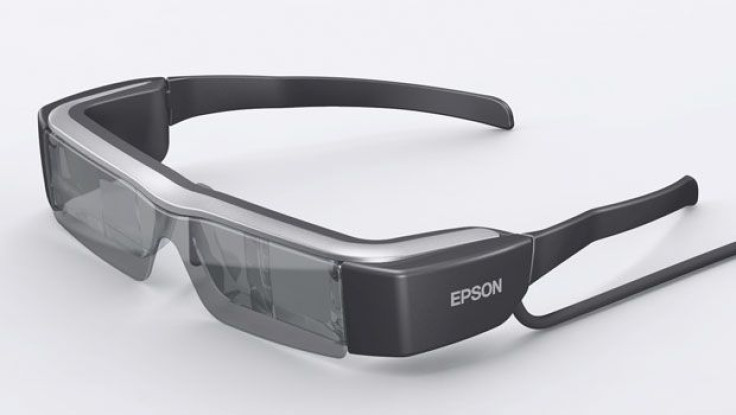With Moverio BT-200 Smart Glasses, Epson Hopes To Take On Google Glass
Epson Is Taking On Google Glass With Moverio 'Smart Glasses'

Epson (NASDAQ: SEKEY), known for its wide selection of home and office printers, launched their Moverio BT-200 glasses during the Consumer Electronics Show earlier this year. The glasses are the second generation version of the wearable technology and follow 2011’s Movario BT-100 glasses. Could Epson's latest development give Google a run for its money?
On Tuesday, the Japanese brand held its annual Summer Tech Fest – a product showcase highlighting its newest range of devices, at the spacious Jack Studios in New York City. We were able to experience the glasses first hard, as well as discuss this new and expanding technology with New Ventures Lead Product Manager Eric Mizufuka.

The company insists that the augmented reality glasses aren’t meant to be worn in public like Google Glass – they’re better used to watch and interact with video and play video games. The glasses come with dual screens for both three-dimensional and two-dimensional viewing and their video quality is on par with most high-definition televisions.

Mizufuka explained that Epson is continually building upon this type of wearable technology by joining forces with other developers.
“One of the coolest applications we’re announcing this week with one of our partners is called Aero Glass. It’s a solution for pilots of small aircraft. It lets them visualize the highways of the sky in their field of view,” he told IBTimes on Tuesday.

“These pilots are really reliant on their instrumentation as well as radio signals and positions of planes and no fly zones. Right now, they’re looking at two-dimensional maps, trying to visualize where everything is. But if it’s a cloudy day, that throws a wrench in it. What Aero Glass has built is an augmented reality solution where you can look everywhere around you, and see the highway in the sky. It will show you no fly zones, and everything is updated in real time. We really think focusing on what we consider killer apps for smart glasses is where the market is.”
The glasses can be worn over a regular pair of glasses for added convenience. We were able to watch a movie in hi-def during our presentation. We even played a “Space Invaders” like video game that allowed you to explore the skies and shoot at alien spacecraft. Again, these glasses are more for recreational use, and aren't necessarily for incorporating the internet into the every day lives of users.
Mizufuka explained that this type of wearable technology may not catch on right away, but eventually, it may become commonplace to see people walking around wearing smart glasses.
“Is this something you’ll wear every day? Probably not yet. Socially, maybe it’s not ready. As people get exposed to this technology for purpose-filled applications, you see people wearing them in the workplace, you see your pilot friend wearing them, people flying drones using them to see what the camera sees, we feel like those are the killer apps that will drive adoption,” he said. “As people get more comfortable with the technology, that’s when you’ll see more people starting to wear them.”
One of the most attractive featurs of the Movario BT-200 glasses is the price point. The glasses are available now for $699.
“We’re available today and the price point is $699. There really isn’t anything on the market that offers you a binocular, transparent display under $1,000,” Mizufuka pointed out. He also stressed the importance of user feedback when developing new technology for the smart glasses.
“Obviously, smaller, lighter, better battery life, all of that is going to happen, but it’s really about how to support our partners and satisfy our consumers.”
© Copyright IBTimes 2024. All rights reserved.












